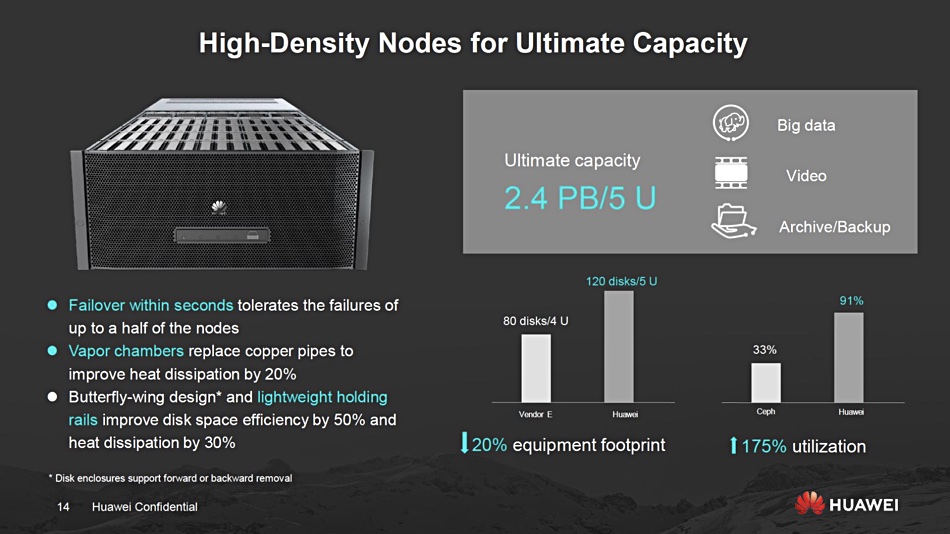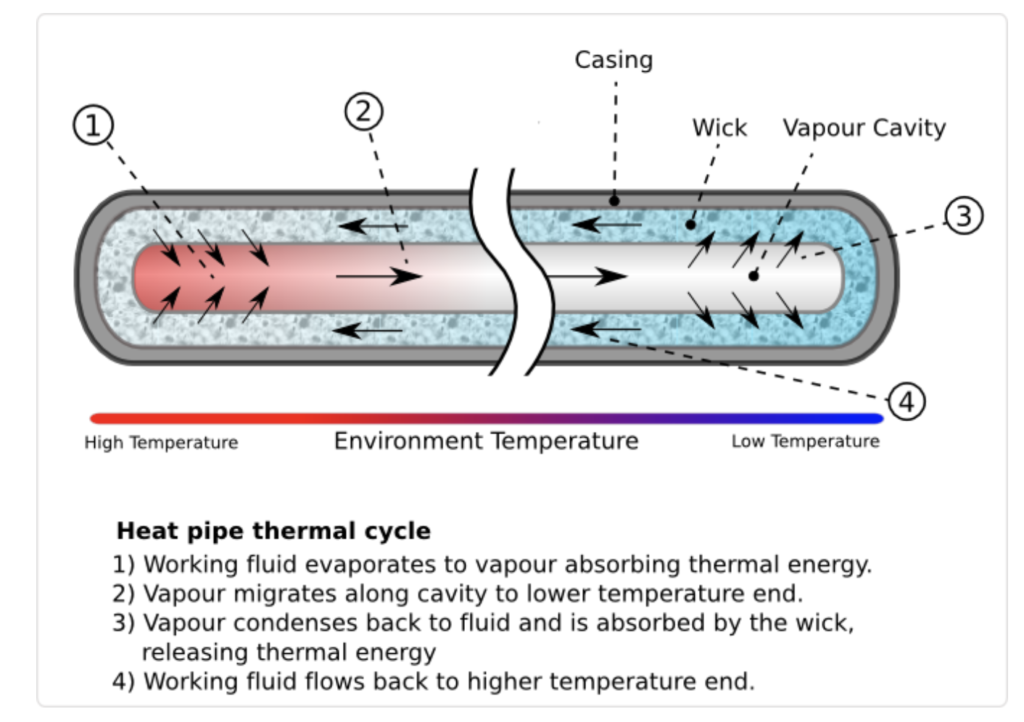Huawei is planning to use 20TB SMR drives in its OceanStor Pacific, a mass data storage “array for the 5G era”.
Launched last month, OceanStor Pacific is a unified silo for block, file, HDFS and object storage data, built from scale-out clustered nodes. It is intended to replace Huawei’s FusionStorage product line.
The array is designed to store massive amounts of data safely, using a clustered node design with from three to 4096 nodes. It uses erasure coding (EC) rather than RAID as EC is more space efficient than RAID, supporting up to 91 per cent disk space utilisation with Huawei’s 22 + 2 EC mode.

The array can withstand the failure of up to four nodes or four enclosures with no loss of data and no hiccup in service availability.

Robert Foley, the Principal Architect for Huawei’s Data Storage, described the Pacific series in an Huawei Data Storage online IT day presentation. He said the array has 2U performance nodes, 4U and 5U capacity nodes, and 2U flash-based high-performance nodes for high-performance computing. An ultra-high density flash node is coming soon.
The 5U storage enclosure holds 120 disk drives – that’s 24 drives per rack unit – and Huawei contrasts this with Dell Technologies’ Isilon 80-drive H5600 enclosure; with 4U and 20 drives/U.

Pacific’s capacity drive trays have a 2.4PB capacity, which means they use 20TB SMR (shingled magnetic recording) drives.
In his presentation, Foley played a video that explicitly shows 20TB disk drives in use.

Western Digital’s DC H650 is a 9-platter, 20TB SMR drive for data centres. Seagate maxes out at 16TB for the time being but has a 20TB heat-assisted, magnetic recording (HAMR) drive to be released by the end of the year.
Toshiba intends to deliver 20TB drives next year. Our conclusion is that Huawei’s Pacific uses Western Digital 20TB drives.
The drive drawers are controlled by Huawei Kunpeng 920 CPUs. These are 64-core, 64-bit ARM processors, designed by Huawei and built on a 7nm process. Huawei says they are 30 per cent more power-efficient than industry counterparts, which we understand is a reference to Intel Xeon X86 processors.

Pacific’s capacity enclosure is heavy – 8 x 5U enclosures in a 40U rack will total 960 drives – and Huawei has given it a butterfly wing design. The drive tray is divided into front and back halves, a 2-way drawer, with a tray capable of being half drawn out from the array’s front or rear aspects to give access to the drives. This helps rack cabinet stability.
Drive tray cooling is another neat aspect of the array cooling. This uses phase-change, heat-pipe technology, a closed system in which heat is taken in at the hot end and converts a liquid to a gas. This flows to the cool end of the pipe, where it condenses, releasing heat, and the liquid returns to the hot end to pick up heat again in a continuous cycle.

The system balances temperatures in the front and rear of disk enclosures to keep disk operating temperature at the right level. Huawei says it uses this technology in some of its mobile phones.
The Pacific array has a 3-tier design. Hot, warm and cold data is automatically tiered onto SSDs, HDDs, and Blu-ray disks. Network connectivity includes 10 or 25GbitE, both TCP and RoCE, and 56 or 100Gbit/s InfiniBand. That means both low latency and high bandwidth needs can be met.
There is no datasheet available for the Pacific series of products yet.
Comment
OceanStor Pacific’s 5U high-capacity drawer design is an effective way to pack almost 1,000 disk drives into a 4U rack cabinet that doesn’t fall over when a drive tray is pulled out, and can cool the 120 drives inside each enclosure.
A 4U enclosure with 80 drives means a standard 40U rack would hold 800 drives. Huawei’s Pacific design can cram 960 drives into the same space – 20 per cent more.
As unified block, file, HDFS and object array, OceanStor Pacific can be sold as silo-reduction storage. For customers using HDFS in the classic way; with multiple server+storage nodes, the Pacific array decouples HDFS compute and storage, and saves more space by erasure coding instead of Hadoop’s traditional three copies of data.
Huawei claims a 22PB, 15-cabinet Hadoop system setup can be reduced to eight cabinets with Pacific’s decoupled compute and storage design, and reduced again to five cabinets with its high-density storage trays.
US regulators are putting the squeeze on Huawei, but elsewhere the Chinese company is a formidable contender for data storage budgets. OceanStor Pacific is potentially tough competition for other mainstream storage vendors.








